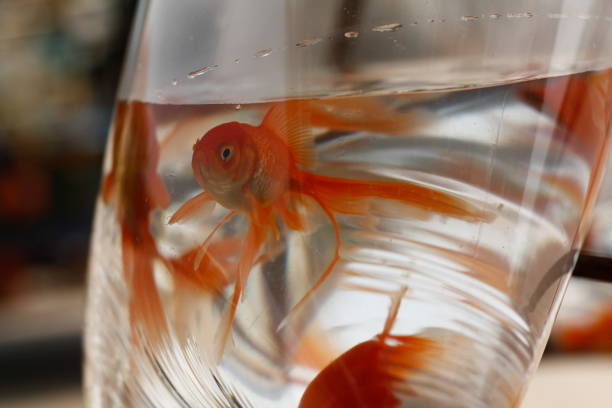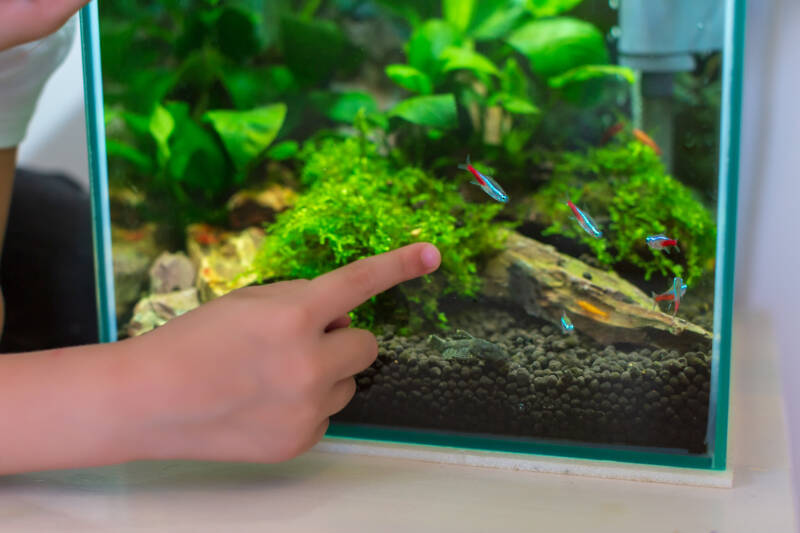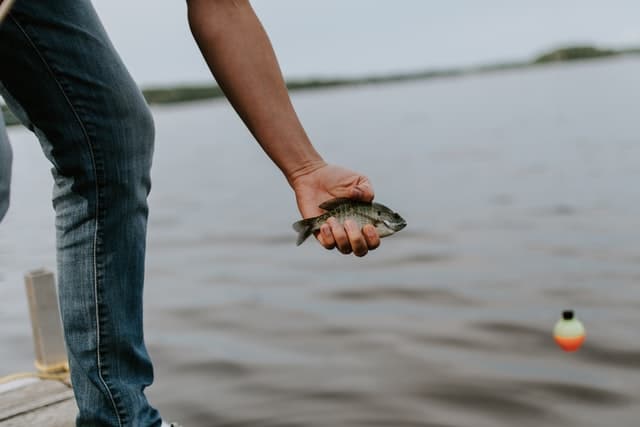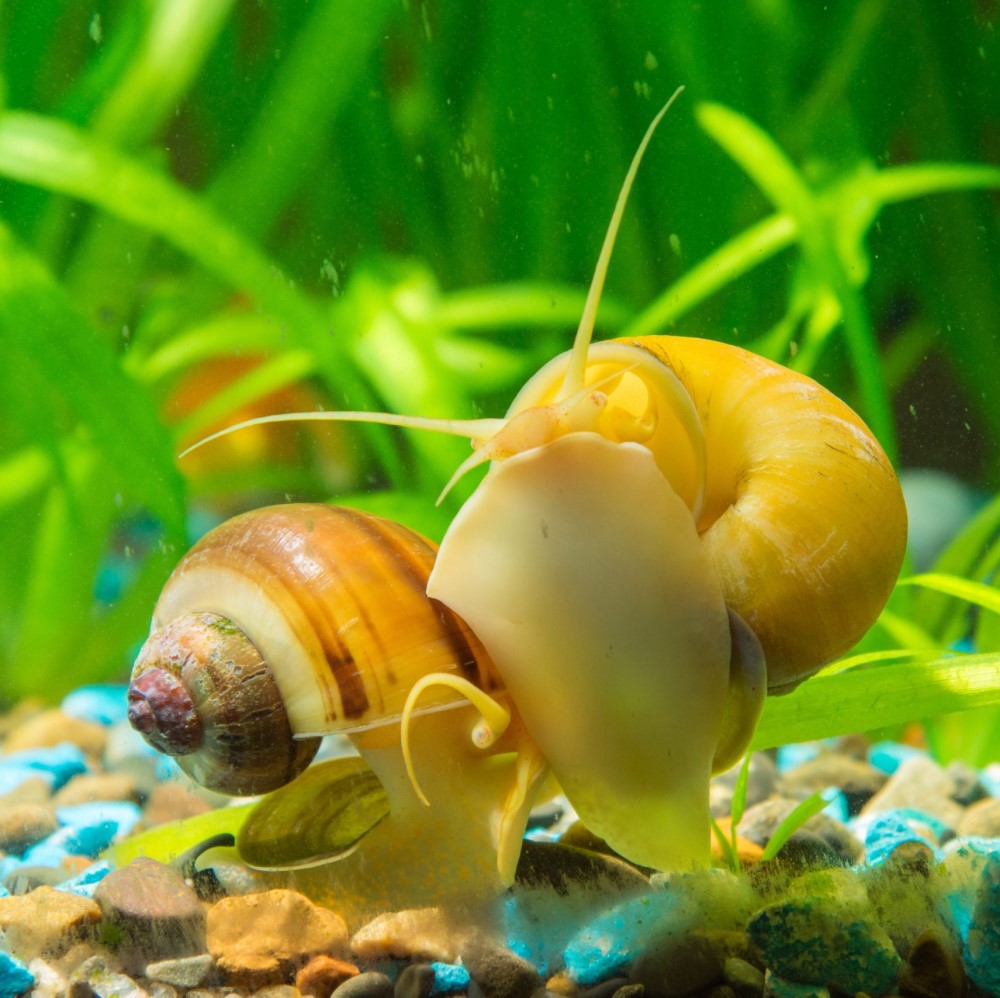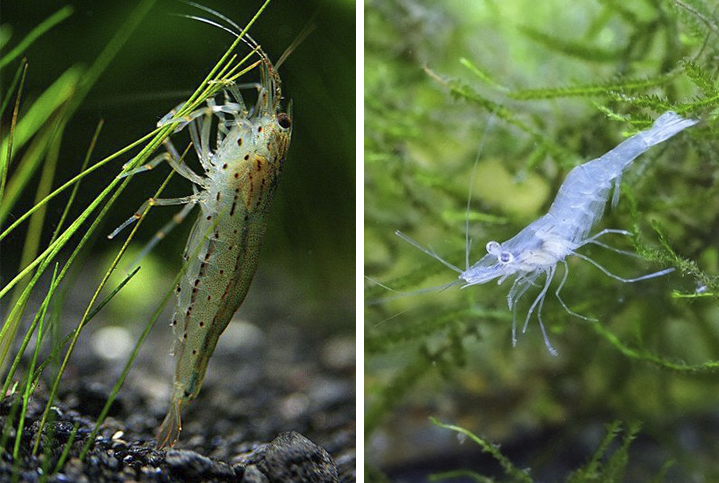

Fish require special care to thrive, and you must provide them with the right food and a conducive environment. Bluegills, also known as pond perch, crappies, or bream, are a top favorite among most fish keepers because they are beautiful to look at, and they keep the small water insects and crustaceans population low. The fish are also super-friendly; they can eat directly from your hands.
Bluegills are carnivorous, and according to research Trusted Source The food and feeding habits of the bluegill and yellow perch in lakes with good and poor fishing. The bluegill, Lepomis macrochirus Rafinesque, and the yellow perch, Perca flavescens (Mitchill), are found in most inland lakes in Michigan, and are the most common panfishes in the fisherman’s creel. quod.lib.umich.edu , they can eat just about anything. You can feed them other small kinds of fish, and you can easily get a variety of small fish from pet shops, and they aren’t that expensive. This article has got great pointers and hints on what to feed bluegill in an aquarium. Read on to find full information about the popular pet fish and how to feed it.
Bluegills are beautiful long-bodied freshwater sunfish that weigh 2 to 2.5kgs. They are also popularly known as pond perch, bream, or crappies, and they can grow to be longer than 12 inches.
The fish can lay more than 20,000 eggs yearly and live up to 4 to 6 years.
Keeping bluegill in aquarium
You can keep bluegills alongside other fish species in your aquarium. They need about 75 gallons of fresh water with pH levels of about 6.8 to 7.2. The fish are also found in lakes, rivers, and ponds.
Although they are friendly fish, you will notice some queer habits among your bluegills like hiding behind the tall plants in your aquarium. They hide from their predators. They also hunt for their food, which is mostly small fish and crustaceans. Their shimmery colors suit their bold character and feeding habits.
Bluegills are carnivores and can eat almost everything. Here are some of the top food options for your bluegills;
These are the most ideal for young bluegills. Zooplankton is the primary source of nutrients for your bluegills until they are grown to eat other types of food, and it contains the right kind of nutrients that help them grow.
Zooplanktons are micro-organisms usually found in the wild, but you can introduce them into your aquarium and allow them to multiply. If you have larger bluegills in the aquarium, they won’t be bothered to eat the zooplanktons as they prefer other meal options. However, if they find bunched zooplanktons, they wouldn’t mind.
These are a popular option. Shiner fish are 2 to 3 inches long and are a delicacy for mature bluegills. Bluegills have been observed to feed on shiner fish in the fall and during summer and are thus used as fishing bait or food by fish keepers. Shiner fish contain adequate nutrients to keep a fully grown bluegill sated for a long while.
The Magic products small Shiner emerald fishing equipment remains the most popular shiner fish alternative for most fish keepers because of their lifelike appearance and availability. You can get them in any pet store around you. They are also used as bait when fishing, and fishermen swear by their ability to hold better on the hook
Suckerfish are a great source of food for a variety of fish, including bluegills. They are small fish with cylindrical bodies and downward-pointing mouths that are puckering. Suckers are bred and born just in time when seasons are changing, and bluegills’ diet is changing as well. It is not easy to get your hands on live suckers, but the large bluegills in your aquarium would definitely enjoy feeding on them.
If you can get some minnows, just trim their tails and throw them in the aquarium for the bluegills to hunt them for food. You will cause no harm when you trim the minnows’ tail; just be sure not to draw any blood. When you trim their lower or upper half before releasing them into the water, they will struggle to swim, and the site will incite the bluegills to hunt.
You can also use freeze-dried minnows like the ones from Vital essentials dog treats. The minnows are naturally freeze-dried to remove the moisture, and they have zero additives and are just as healthy and nutritious as fresh minnows from the lake.
These are hard to come by but are a top delicacy for bluegills. Since they have small mouths, Bluegills find it easy to feed on shad fish. Gizzard shad, threadfin shad, and small American shad are their top preferences.
Shad fish barely stay alive after being captured because they stress too much and die. If you can’t find live fresh shads for your bluegills, you can get the highly acclaimed Killer bee whole shad. It is popular among fishermen as bait, but you can use it to feed your bluegills as they are delicious and nutritious.
This is a hassle-free option as they are abundantly available in pet stores. They are also very affordable, hence a top favorite for many fish keepers. Bluegills love baitfish because they are delicious.
Bugs found in water are a big meal option for bluegills. They can feed on mosquito larvae, other insects’ larvae, eggs, and the insects themselves. This especially happens during summer, and the insects provide a great nutrient supply. It may be hard to feed your bluegills water insects, but you can buy frozen insects or larvae meant for feeding fish anytime you feel like switching up their diet.
You can keep crustaceans in the aquarium or just introduce them during meal times. Crustaceans are highly available in feed shops or fish shops. If you keep them in the aquarium, they’d be a fantastic nighttime snack for your bluegills because they come out at night when the lights go off. They are incredibly low-maintenance to keep, and they usually stick to the bottom of the aquarium.
Bluegills love freshly molted crustaceans, mostly small crayfish, and freshwater shrimp, because they are easier to spot and hunt.
As mentioned before, bluegills will eat anything. Larvae and fully grown insects are also their favorite. Crickets and mealworms are the most popular options, and some fish keepers swear by grasshoppers as well.
During fishing in the wild, insects are used to draw bluegills to the surface, which is enough evidence that they love to consume insects. The only challenge with insects and larvae is keeping them alive. You have to be really quick when feeding the bluegills.
Besides water insects, bluegills also consume nightcrawlers and terrestrial bugs like bees, moths, ants, flies, spiders, and gnats. In the wild, bluegills hunt and feed on these bugs. You can introduce them into the aquarium when they are alive to make feed time more thrilling, or you can opt for the freeze-dried varieties.
These are a staple for most aquarium fish, and bluegills equally enjoy them. Fish pellets and dried worms are a fantastic alternative to small live fish as they contain all the essential nutrients needed for survival and growth. Both of them are readily available in most pet shops, hence their popularity among most fish keepers.
Knowing what to feed your bluegills is not enough to take good care of them. You have to know how to feed them properly as well as offer them maximum comfort for their well-being. Here are a few hints and hacks on how to care for your bluegills properly;
Learn their feeding habits- yes, there are endless options for keeping your bluegills nourished, but that doesn’t mean you should overfeed them. Overfeeding is dangerous as it can cause digestive and urinary disorders that can affect the entire aquarium.
According to research, the best time to feed fish is morning and evening like they do in the wild unless you have omnivore and herbivore species that forage the entire day. The feeding session should not last longer than 10 seconds, and the excess food should be removed to avoid contaminating the aquarium when it decays.
Although bluegills can go 7 to 12 days without feeding, avoid starving them for over 2 days because their will to hunt will deteriorate.
Feed your baby bluegills correctly- Bluegills begin to spawn every summer when the water temperature reaches 69 degrees F. the baby bluegills are called fry, and they grow very fast and they are usually hungry. If you have baby bluegills in your aquarium, you can’t feed them the same way you feed the mature ones. You can feed them on zooplankton until they are mature enough to eat visible food.
Zooplankton are microscopic organisms central to the health of freshwater systems. Cladocera and copepods are the most common groups used to feed baby bluegills.
Feeding bluegills during winter- bluegills are warm-water fish species and their feeding and activity drastically reduces during the winter months. According to research, they do not bite at all when the water goes below 50 degrees F. In the wild, they turn to aquatic vegetation like duckweed and hydrilla when bait and forage fish are scarce during winter. In the aquarium, you can control the temperature Trusted Source Aquarium Temperature Control A good aquarium temperature range is 76° to 80°F (25° to 27°C). A reliable heater is necessary for most tropical fishes. www.tfhmagazine.com using a heater controller so you wouldn’t have to worry much about switching their diet during winter.
Keep some of the food as tank mates- bluegills are carnivores and they love to hunt for their food. You can keep some of their favorites like crustaceans as their tank-mates. Go for very low-maintenance tank mates like freshwater shrimp and small crayfish.
When adding more tank mates, keep in mind that bluegills are very aggressive fish. In fact, it is recommended that you keep them alone if you have a small fish tank, but if you have a large aquarium, you can keep them with other species. Some of the species that can survive bluegills include; Amerurus, Micropterus, Poxomis, Plecos, and channel catfish.
Bluegills are the most popular sunfish kept as pets because they are easy maintenance. They can eat just about anything. You will find them nibbling at the algae and other aquatic vegetation in your aquarium. If you can’t access any of the small fish species we have listed in the article you can easily get fish pellets or dried worms for a pet store or fish store. They are equally nutritious and healthy for your fish.
You can either make your bluegills’ food their tank mates or you can introduce during feeding. Since they love to hunt for their food, be keen on introducing live fish. Also, monitor them to study their feeding habits then ensure you remove the excess food to avoid contaminating the aquarium with decayed food.

